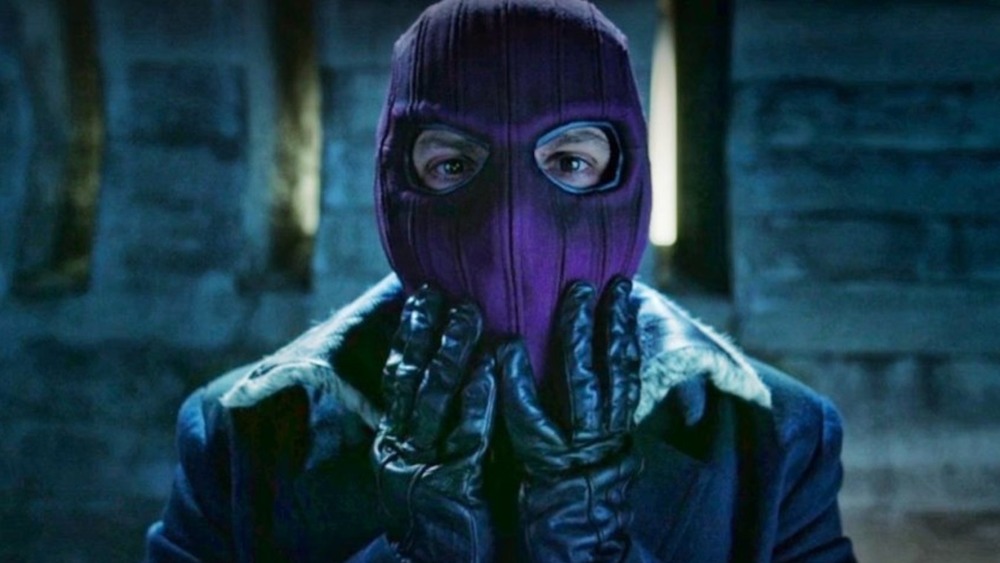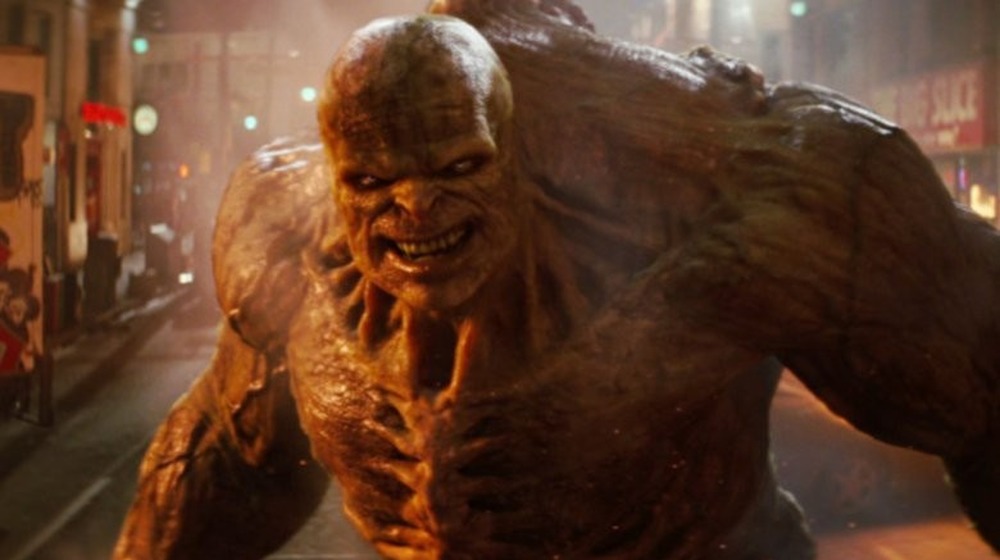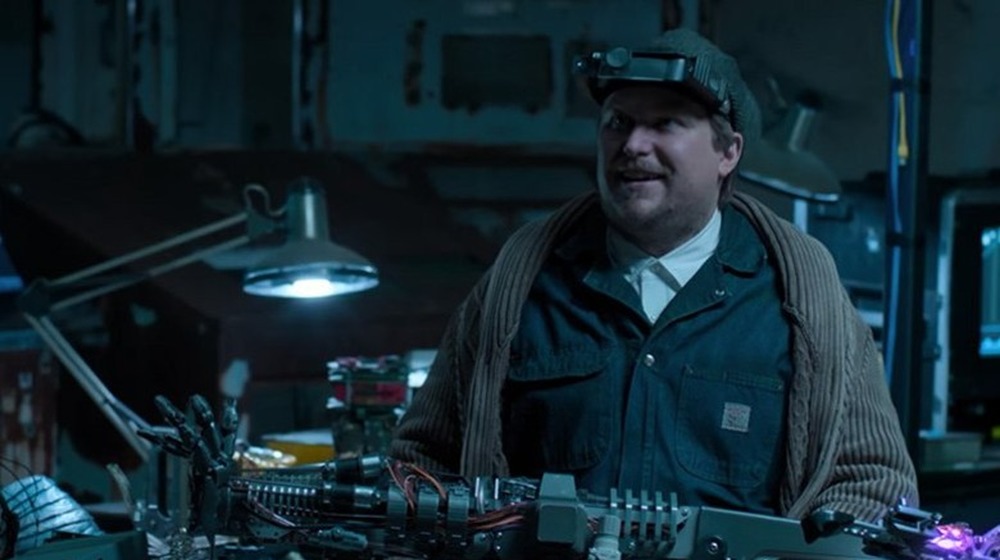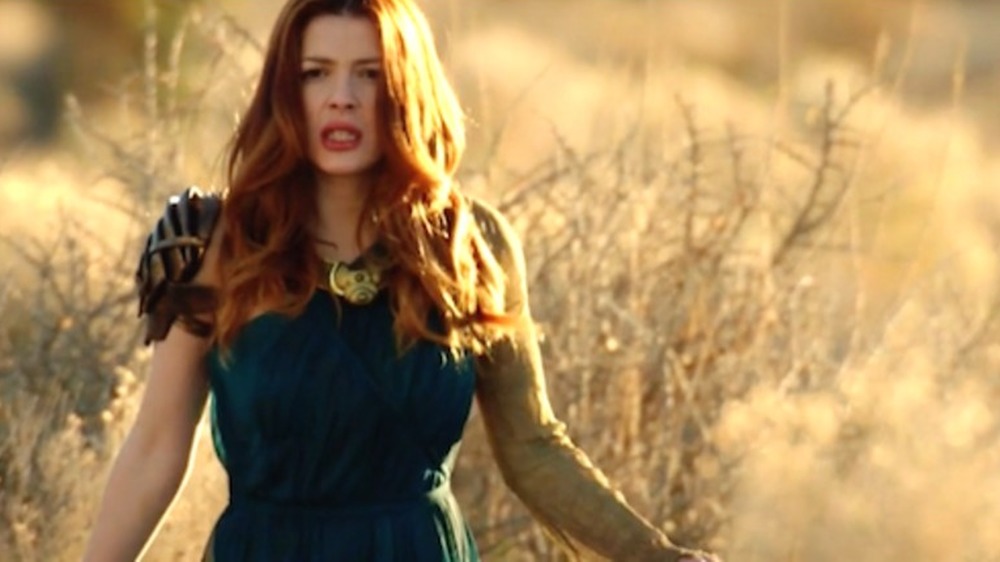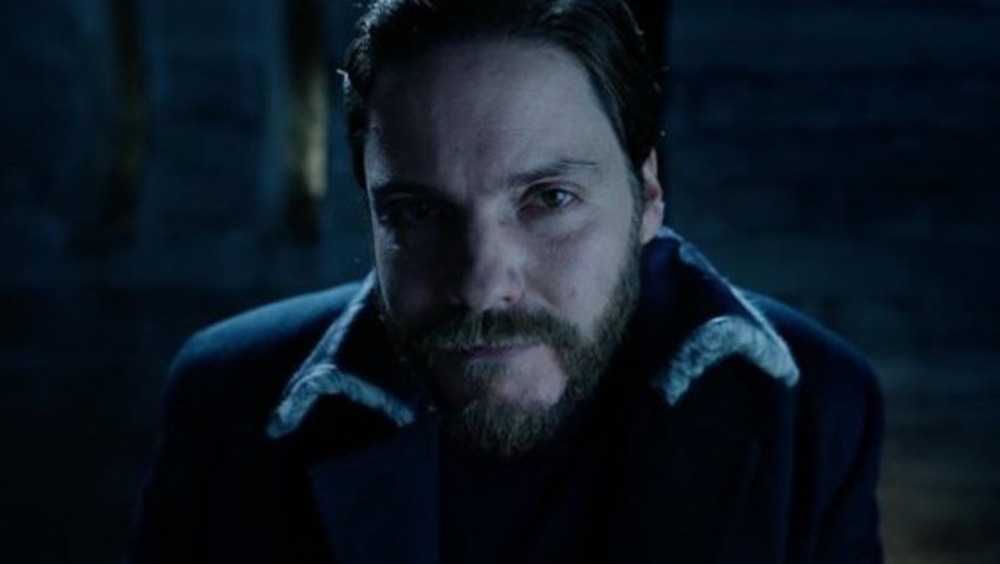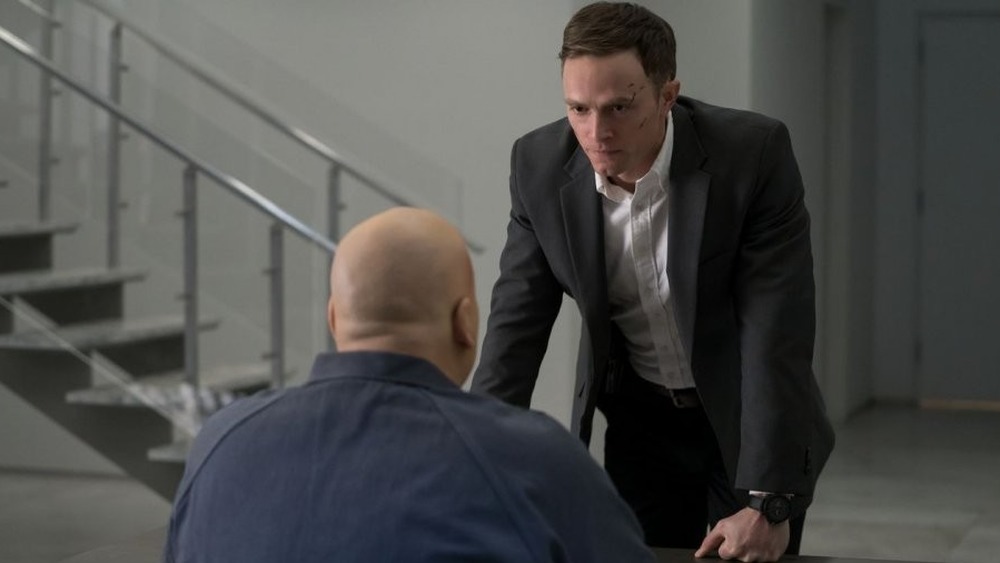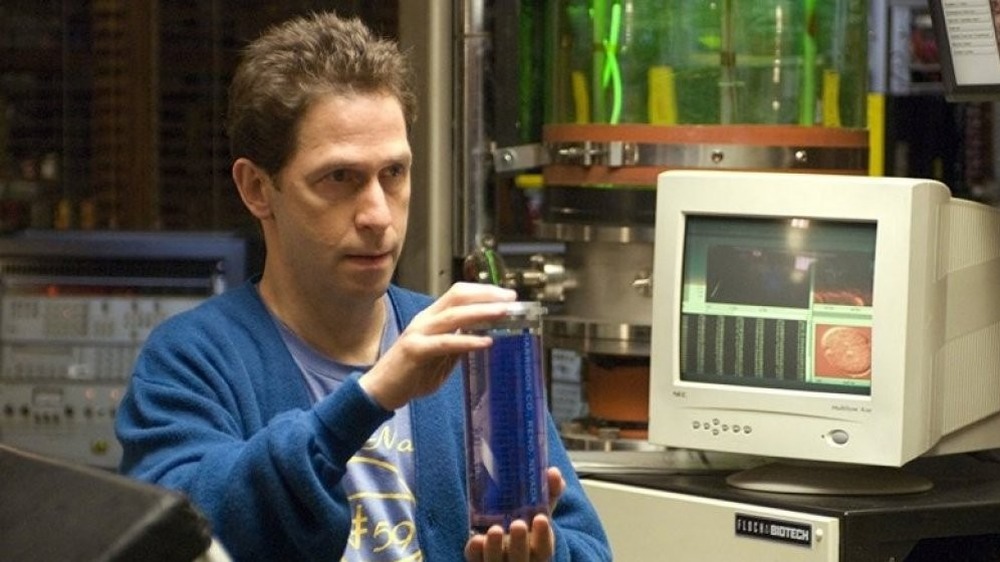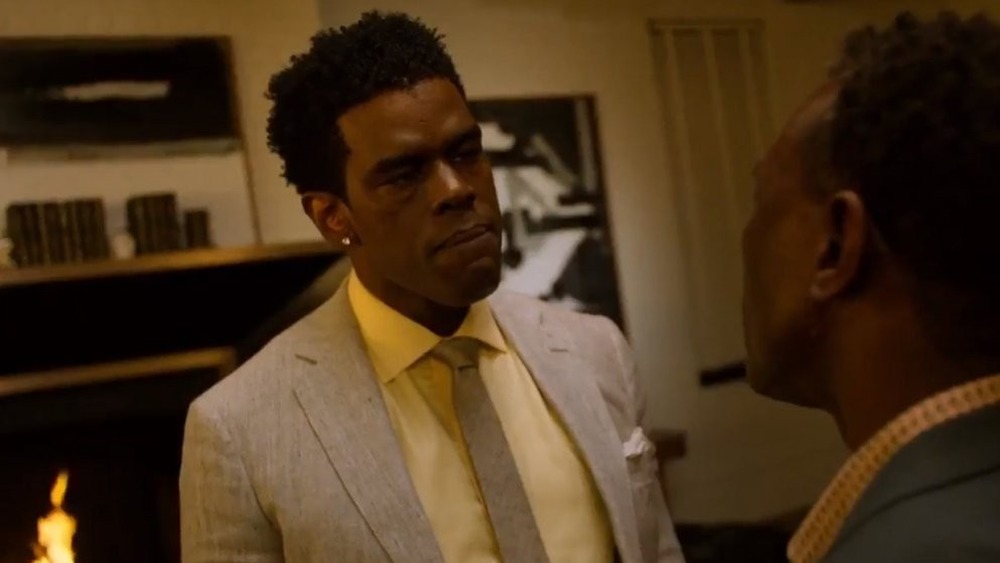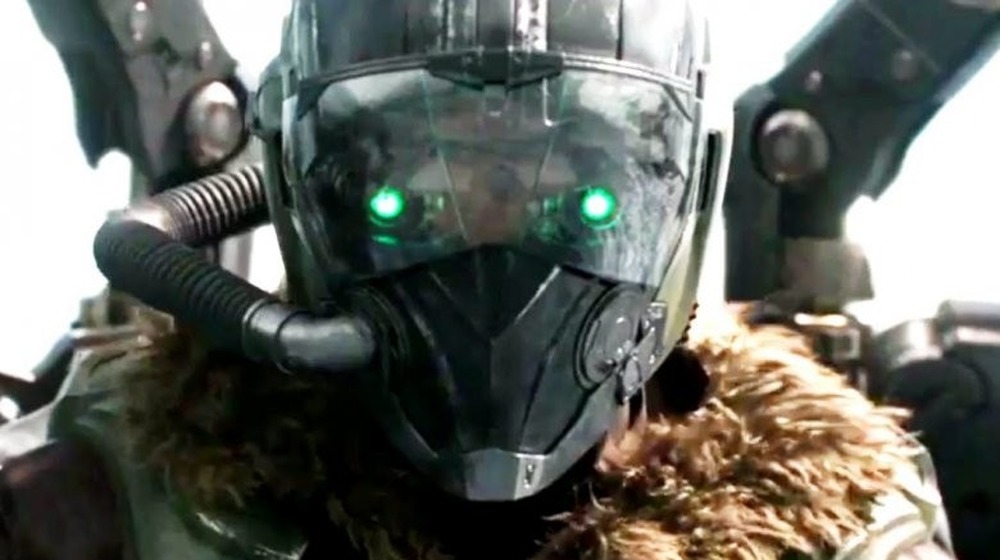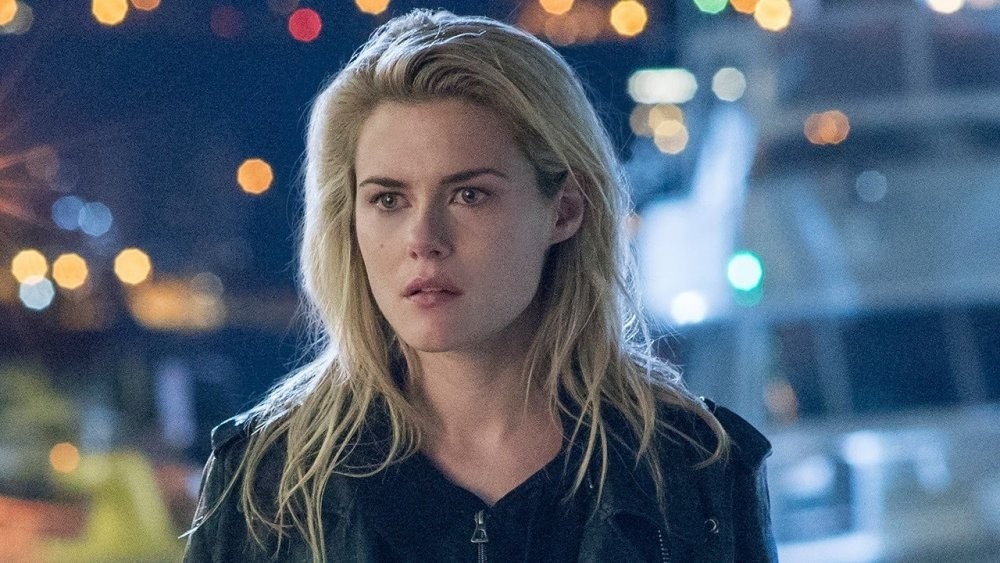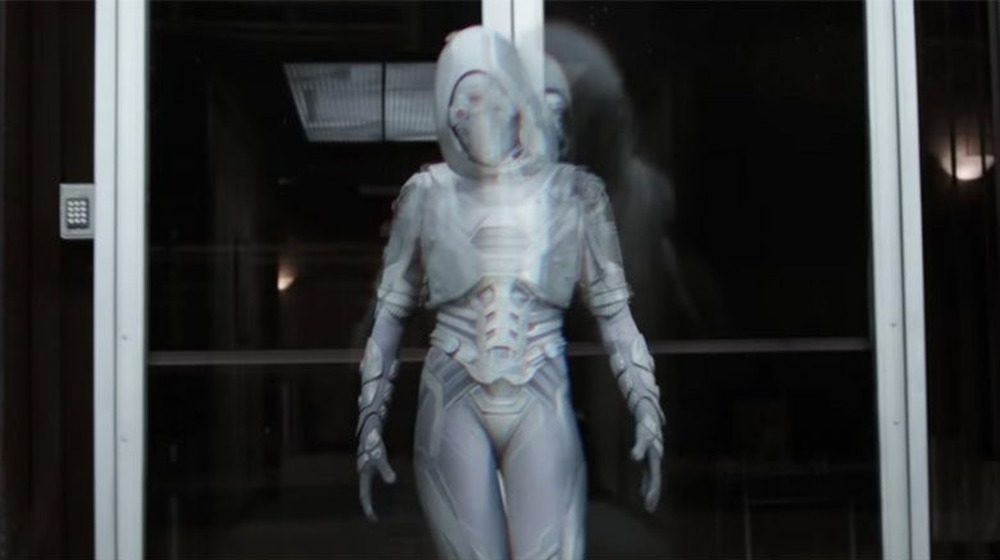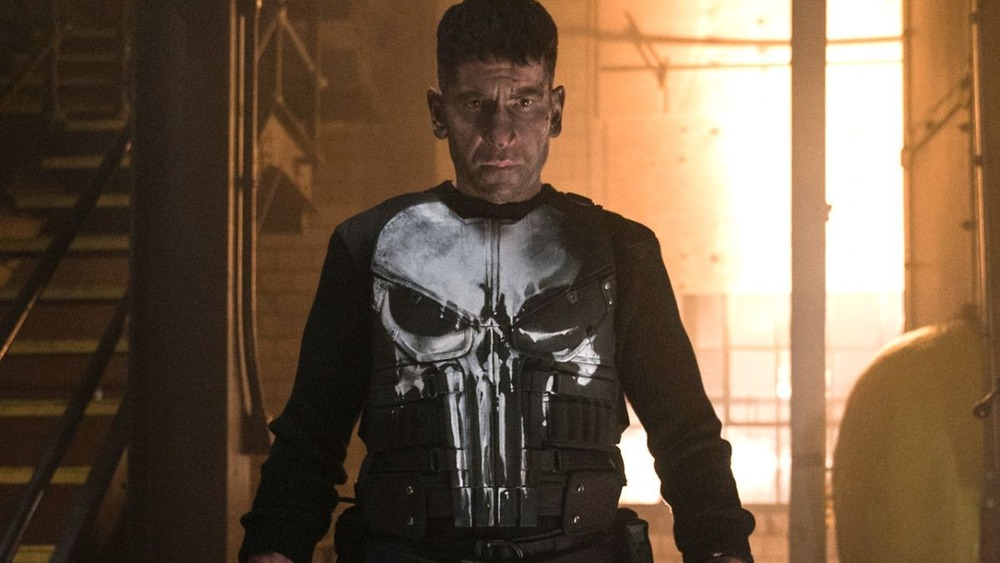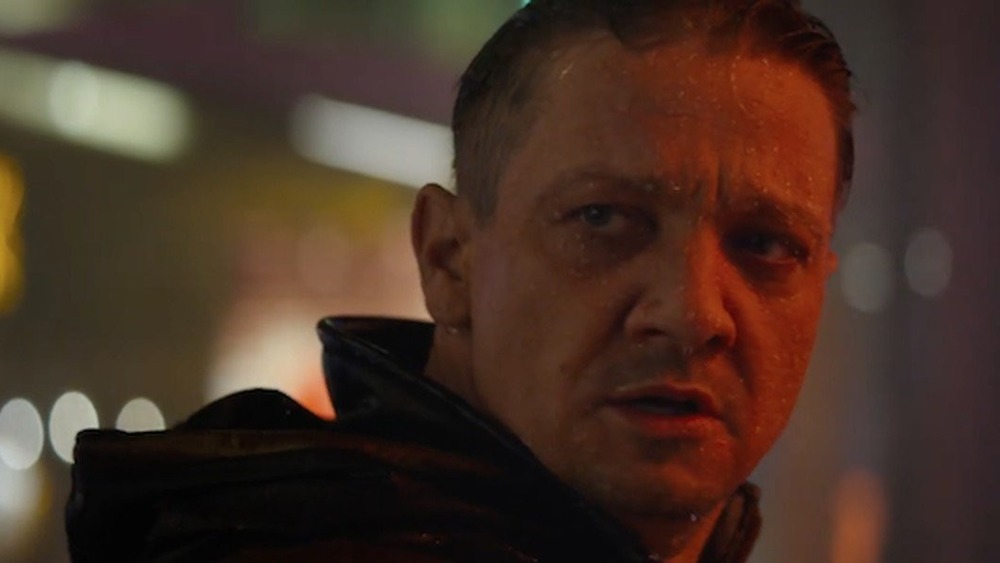Which MCU Villains Make The Most Sense In A Thunderbolts Movie?
Whether they're acting as villains in disguise, bad guys seeking redemption, a fight club, or ultraviolent antiheroes, Marvel's Thunderbolts have been part of the company's mythology since their first appearance in 1997's Incredible Hulk #449. They change leaders, line-ups, and missions, but the group always endures. It's likely only a matter of time before they show up in the MCU.
We don't know who will be in the Thunderbolts once they finally hit the big screen, but if Marvel Studios remains true to the source material, then, regardless of their motivations, the MCU Thunderbolts will largely be comprised of supervillains. Since Marvel made sure to introduce all the individual members of the original Avengers line-up before bringing them together as a team, we had an interesting idea: What if the members of Marvel's big screen Thunderbolts are similarly put together from villains who have already shown up in the MCU? What might a team like that look like? Who would be in it? And, most importantly, why would they join?
Drawn from the Marvel movies and TV shows you've already seen, here are the MCU villains who would make the most sense in a Thunderbolts movie.
Abomination
There's a pretty obvious choice for our hypothetical Thunderbolts' strong man: Emil Blonsky, AKA Abomination, from 2008's Incredible Hulk. As strong as the Hulk and a whole lot uglier, Abomination is ultimately defeated by his rival, but, thanks to the intervention of Betty Ross, survives the conflict. In spite of all the damage he does and the people he kills before and during his fight with the Hulk, the military shows significant interest in recruiting Abomination. In fact, in 2011's Marvel One-Shot: The Consultant, we learn that it's Blonsky, instead of the Hulk, who General Ross wants recruited into the Avengers.
Of course, there's the question of how anyone could control the Abomination. But perhaps there'd be no need of an answer. We don't get to know Blonsky before he agrees to use Ross' super soldier serum — it could be that it was largely the mixture of the serum and Bruce Banner's cloned blood that drove him insane. It's been a long since his Harlem rampage: If Banner could evolve into Professor Hulk in all that time, maybe Blonsky has managed to get a better hold on his sanity as well. It could even be that he's desperate for a way to redeem himself.
The Tinkerer
Not every member of a team has to be on the front lines. When Phineas Mason (better known as the Tinkerer in the comics) works for the Vulture in 2017's Spider-Man: Homecoming, he never squares off against the webslinger himself. He spends his time at his worktable, designing and putting together high-tech gadgets, and occasionally nagging Adrian Toomes about getting cooler stuff.
At the end of Spider-Man: Homecoming, it isn't completely clear what happens to the Tinkerer. He might've slipped free of the authorities, or he might be behind bars somewhere. Regardless, he survives the film with his mind intact, and that's his greatest weapon.
In a Thunderbolts gathering, Phineas probably wouldn't be the one getting into hand-to-hand combat bouts with the team's antagonists. Most likely, the Tinkerer would be to the Thunderbolts what Q is to James Bond: The guy developing the tech for the heroes to take out in the field. There's intriguing precedent for his role as well. One of the original members of the comic book Thunderbolts is a tech-centered guy named, fittingly, Techno. His real name is Norbert Ebersol, and he previously operated as the villainous Fixer. Perhaps Phineas Mason could step into Techno's shoes on the big screen.
Lorelei
One of the most popular Thor villains who has yet to show up in the MCU is Amora, better known as the Enchantress. This deadly Asgardian sorceress commands powerful spells, and can bend any man's will to her own. But while we haven't yet seen the Enchantress, at least one of her family members has made an MCU appearance. Elena Satine played Amora's sister Lorelei in two episodes of Marvel's Agents of S.H.I.E.L.D.'s inaugural season. Lorelei is one of many Asgardian prisoners freed during the events of 2013's Thor: The Dark World. She uses her newfound freedom, and her ability to control the minds of men, to attempt to conquer the Earth.
We actually don't know if Lorelei is still alive: Sif brings her back to Asgard as a captive at the end of "Yes Men." Unless she has once again found a way to escape Asgard's dungeons, Lorelei was in Asgard during the events of 2017's Thor: Ragnarok. It is thus conceivable she made her way to Earth's New Asgard, along with the other refugees.
Lorelei could bring a lot to the table in a Thunderbolts line-up. As an Asgardian, she's already a lot stronger than your average human, and her ability to control the minds of men could open a lot of doors for the team — though they'd have to make sure she doesn't turn that lovely voice on them.
Helmut Zemo
Introduced in 2016's Captain America: Civil War, Daniel Brühl's Zemo is one of the most obvious choices for the MCU's Thunderbolts. Baron Helmut Zemo leads multiple incarnations of the Thunderbolts in the comics, including the very first team, which premiered in 1997. Since he'll be showing up for the upcoming miniseries The Falcon and the Winter Soldier, we know he's still active. While his part in Civil War has little to do with physical conflict, from his history as a colonel in the Sokovian military, we know he has combat skills.
Were he to be a part of an MCU Thunderbolts team, what kind of team would it be? In the original 1997 Thunderbolts series, the team starts out as a ruse: They're villains disguised as superheroes looking to gain the trust of the public, the government, and other heroes. If Zemo is still obsessed with getting revenge on the Avengers for the deaths of his family, he could end up using a similar plan. It's also possible, however unlikely, that he'd want redemption for the evil he's done. His antics in Civil War create plenty of victims who had nothing to do with his family's deaths, after all, including Wakanda's late king, T'Chaka. He could eventually come to feel guilty enough for his crimes to want to make amends.
Bullseye
The last we see of Benjamin Poindexter in the final season of Netflix's Daredevil, he's not doing so great: His back is broken by Wilson Fisk, and he's agreed to an experimental surgery. In his final shot in the series, he's on the operating table, and his eyes open, revealing bullseyes in his irises. This signals he's finally evolved from a puppet Fisk manipulates into the classic Daredevil villain, Bullseye.
Bullseye would be an interesting and troubling Thunderbolt. He's been a member of the team in the comics, but not when they were particularly interested in redemption. Bullseye is recruited during the 2006 line-wide event Civil War, when the government uses the team as a tool against the anti-registration heroes led by Captain America. Norman Osborn later folds Bullseye into his Dark Avengers, re-branded as a new Hawkeye.
Bullseye is arguably the most mentally unstable villain on this list. His sanity is already in pieces when we meet him in Daredevil and it's more than likely the events of the series leave him in even worse shape. As a result, he'd likely only fit into two potential incarnations of the Thunderbolts: A version like the original, in which the members begin as bad guys disguised as heroes, or a Thunderbolts team more like the Suicide Squad, in which he'd be pressed into service against his will. Either way, his mental state, coupled with his deadly skills, would make him a volatile wild card.
The Leader
We never get to see Dr. Samuel Stern's full transformation into the Leader in The Incredible Hulk, though it's strongly implied to take place shortly before the final battle between Hulk and Abomination. If fate proved kind enough to give us a Hulk sequel, Tim Blake Nelson could certainly return as the psychic and super-intelligent Leader. In the meantime, Marvel Studios president Kevin Feige has said that bringing the Leader into the MCU has been discussed more than once. A Thunderbolts movie could be the perfect chance.
The Leader has the distinction of being one of the only supervillains on the Red Hulk's version of the team, which is mainly comprised of outlaw antiheroes like Punisher, Deadpool, and Elektra. He is transformed into Red Leader at the time, needing a transfer of energy from Red Hulk after the Punisher tries to murder him. Staying true to form, Leader spends most of his time plotting in secret to murder the rest of his teammates and pin it all on Red Hulk.
As a Thunderbolt on the big screen, Leader could fill a number of interesting roles. He could be the wild card trying to wipe out his colleagues, or perhaps the "guy in the chair," who feeds his team intelligence from a distance. His psychic abilities might even allow them to communicate with each other mentally.
Bushmaster
In the second and final season of Netflix's Luke Cage, Mustafa Shakir plays John McIver, AKA Bushmaster. With his strength, martial arts skills, and enhanced durability, Bushmaster would bring a lot to the Thunderbolts' table. He's the first villain in the series to give Cage any kind of physical challenge without the aid of high-tech weaponry, one of the series' most fun and charismatic antagonists, and, overall, one of the best of all of Marvel's Netflix bad guys.
One question emerges quickly, however: Why would Bushmaster want anything to do with the Thunderbolts? Throughout season two of Luke Cage, Bushmaster's main goal is revenge. He's intent on murdering Mariah Stokes, the last surviving member of the Stokes family cartel, who murdered his own family when he was a boy. While they form a temporary truce, Luke Cage ultimately stops Bushmaster from fulfilling his vengeance, meaning he's probably still gunning for Harlem's former queen of crime.
If the Thunderbolts were formed as ruse, Bushmaster might join with the ultimate goal of getting his teammates' help in making sure Luke Cage doesn't keep him from killing Stokes again. Considering the years he's spent dreaming of payback, it's doubtful the villain would be looking for any kind of redemption — at least not until after he realizes his vengeance, anyway.
The Vulture
Michael Keaton's portrayal of Adrian Toomes, AKA the Vulture, has been widely acclaimed — evidenced in no small part by the prevalence of rumors that he'll return in subsequent films. Many fans are hoping he'll make a comeback in a big screen take on the Sinister Six, but the Thunderbolts offer another avenue of return for the beloved bad guy.
In the original version of the Thunderbolts, Abner Jenkins, better known as the Beetle, remakes himself as the hero Mach-1. Since the helmets for both of his suits of high-tech armor completely cover his face, it isn't particularly tough for Jenkins to remain anonymous. In a movie version of the Thunderbolts, the Vulture could occupy this role. He could call himself Mach-1, the Condor, or, heck, he could call himself Birdman if he wanted to. That's part of the poetry of Zemo's original Thunderbolts plan: If both heroes and villains are wearing masks, who's to say which is which?
Is Toomes interested in redemption? On the one hand, he's not a purely evil guy. He turns to crime after losing a fortune, and rightly feels betrayed. On the other hand, the fact that he feels justified could keep him on a dark path. Either way, it'd be interesting to see what he might do in a Thunderbolts line up.
Trish Walker
Trish Walker of Netflix's Jessica Jones is one of the best candidates for becoming a redemption-seeking criminal. While she has good intentions when we first meet her — she's a victim of trauma who admires Jessica Jones' power and resents her for not using it to be a more effective hero — we all know the adage about where good intentions lead. By the end of Jessica Jones, Walker is heading there at full speed.
While she never takes on her comic book counterpart's name of Hellcat, Walker eventually gets her own set of super powers and tries her hand at fighting crime. It doesn't end well. By the end of the series, she has the deaths of both Jessica's mother Alisa and Gregory Sallinger under her belt. Rather than locking horns with any serial killers or criminal psychics, it's Trish Walker who Jessica fights in the series' final battle. The fight ends with Trish arrested and sent off to the Raft — the same prison where the outlaw heroes are held in Captain America: Civil War.
Trish would be a perfect candidate for a team of Thunderbolts looking to make up for their past misdeeds. Though corrupted, Trish is ultimately a good person. Most of her worst crimes are understandable, including the murder of Sallinger, who tortured and killed Trish's mother. It's likely her time in the Raft could leave her hungry to make up for her mistakes.
Ghost
In the comics, Ghost shows up in a couple of different versions of the Thunderbolts. During the reign of Norman Osborn's Dark Avengers, Ghost acts as a member of a secret team of Thunderbolts who do Osborn's dirty work. He joins the version of the team that forms under Luke Cage after the 2010 crossover event Siege, and appears again in 2018's Punisher series as part of a team of Thunderbolts who form to stop Frank Castle.
Arguably, the MCU's Ghost would be an even better fit with the Thunderbolts than her male comic book counterpart. When we meet her in 2018's Ant-Man and the Wasp, Ghost is a villain of circumstance: She's dying from quantum energy imbalance, and so she turns to crime to save herself. Assuming Bill Foster has managed to keep Ghost alive, she could be looking for a way to pay her debt to the world. With her powers of intangibility and invisibility, she'd be a perfect covert ops member of the Thunderbolts — kind of like the Thunderbolts' answer to Black Widow.
The Punisher
Few people would call Frank Castle a supervillain, and not many would call him a superhero. But he is, without a doubt, a criminal. Regardless of how you want to weigh his actions morally, from a purely legal point of view, the Punisher is a murderer. That could be his ticket into the Thunderbolts.
The Punisher has, in fact, been a Thunderbolt in the comics. 2012's Thunderbolts revival puts Red Hulk in charge of a team of quasi-heroic characters who aren't squeamish about killing their enemies. The roster includes Punisher, Deadpool, Elektra, Ghost Rider, and the Flash Thompson version of Venom. This iteration of the team doesn't seem as ripe for MCU adaptation as others, if for no other reason than the fact that Marvel Studios hasn't featured their more morally ambiguous heroes on the big screen yet.
But there's another way the Punisher could find his way into the Thunderbolts. Frank Castle is alive and free at the end of Netflix's Punisher, but there's no reason things have to stay that way. In an MCU filling up with super-powered do-gooders, it's perfectly reasonable to think that Frank might get KO'd by one of them and find himself in a Suicide Squad-type situation, in which he is given a choice between a spot on a government-sponsored Thunderbolts team or a cell in the Raft.
Hawkeye
In the comics, Clint Barton starts off as a crook. So after the original Thunderbolts turn on Baron Zemo and subsequently find themselves leaderless, Hawkeye — who knows what it's like to want redemption — steps in to fill the void and teach these former enemies to be heroes.
As far as we've seen in the films, the MCU's Hawkeye doesn't begin as a criminal — but that doesn't mean he doesn't have a lot to make up for. After Thanos' fateful snap kills his wife and children in 2019's Avengers: Endgame, Clint goes wild. He assumes his outlaw identity, Ronin, and travels the globe, murdering criminals in Mexico and Japan, among other places. He's so profoundly changed by his crimes that, in spite of the family he hopes to resurrect, he feels he's the perfect choice to sacrifice his life for the Soul Stone. Black Widow takes the choice away from him, but only just.
If the MCU's Thunderbolts prove to be a team looking to redeem themselves, Hawkeye could once again serve as the perfect leader and teacher.
